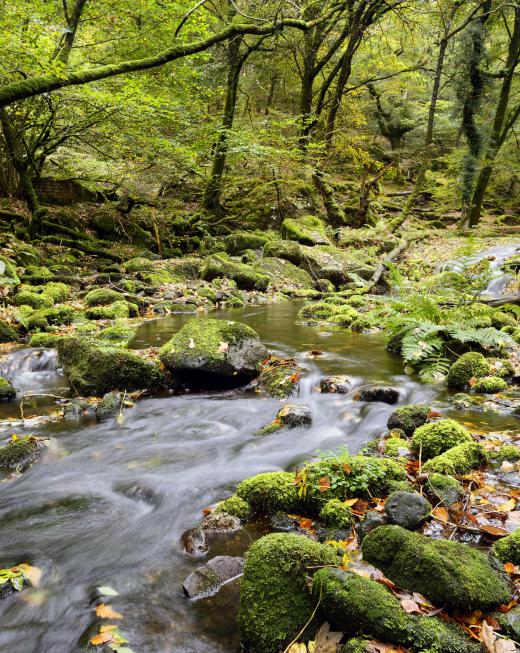What is Groundwater Discharge?
Groundwater discharge is the movement of water out of an area of saturated soil. Rainwater seeps into the ground and moves downwards through the soil until a saturated zone is reached, called an aquifer. Here, openings and gaps in the soil and rock are filled with water, called groundwater. The top of this saturated zone is called the water table.
Water moves into aquifers in locations called groundwater recharge areas, and moves out of aquifers as groundwater discharge in locations called discharge points. While groundwater discharge usually refers to the water leaving aquifers in the soil, sometimes the term is also used to reference water moving through an aquifer. In either case, the unit of measurement of groundwater flow that is typically used is cubic meters per second (m3/s).

A spring is an easily visible point of groundwater discharge, but there are many other places that act as discharge points. Discharge occurs when water seeps from aquifers into rivers, streams, and lakes. Water may also seep out of the ground into wetlands and marshes. In areas where the water table is close to the top of the ground, groundwater may be mostly discharged through the actions of growing plants as they draw water out of aquifers, and release it into the air as moisture. Near the ocean, discharge of groundwater may occur directly into the sea, and in this case, it is called submarine groundwater discharge.

Man-made wells can create artificial points of discharge for groundwater. When water is pumped out of a well, the level of the water table in the ground immediately surrounding the well is lowered. This creates a zone called a cone of depression. Groundwater then tends to flow towards the well, providing further water that can be pumped up. In this way, groundwater resources are particular important in arid areas that have little rainfall and a strong reliance on wells as a water source.
Groundwater flow is an important part of the water cycle. While underground springs may exist, the vast majority of groundwater occupies gaps and pores in the ground, and flows through the ground a little like water might flow through a sponge. In permeable rock, under the right circumstances, groundwater may flow quite far in short spaces of times. In other areas, groundwater may be stored for years in long-term aquifers before coming out again as groundwater discharge.
AS FEATURED ON:
AS FEATURED ON:












Discussion Comments
There are many marshes surrounding the area where I live, and they are full of murky groundwater. Even droughts can’t seem to thoroughly dry up these swampy areas.
When the groundwater does get low, the marshes develop a green slime across the surface of the water. It parts a little after a good rainfall.
What’s cool about a marsh is that it gets replenished from both above and below. As it rains, it receives water, and since the groundwater level also rises, it discharges into the marsh from beneath the surface.
I’ve come across mountain springs before, and it is pretty cool to see water flowing out of a rock. It’s kind of mystical.
Where I live, groundwater mostly gets discharged through plants and wells. There are no boulders or mountains that can hold water in their gaps, and the only time I see a zone of saturation is when it rains a lot and my flat back yard gets flooded.
The water from a mountain spring is so cold and fresh. I don’t have any qualms about drinking it, and it tastes and feels so good after a long hike.
Post your comments